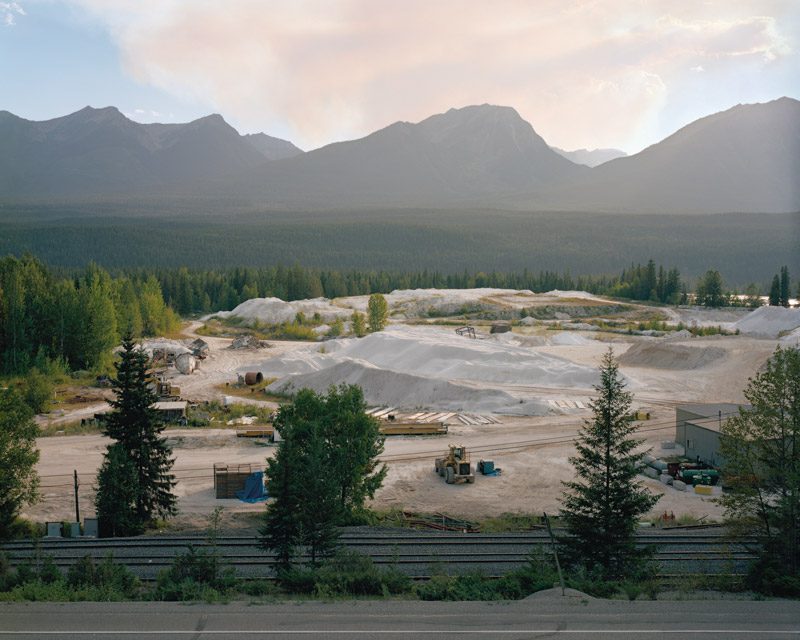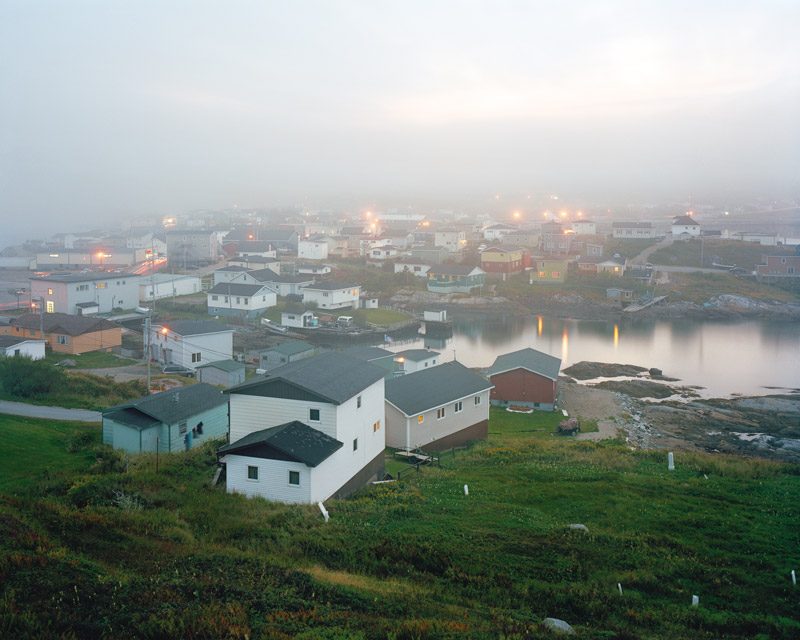[Winter 2016]
Ryerson Image Centre
29 April – 28 June, 2015
By Jon Davies
Born in 1974 in Edmonton, Scott Conarroe is best known for his continent-spanning By Rail (2007–09) and By Sea (2009–11). In these photographic series, Conarroe employed a large-format camera and long exposures to consider the U.S. and Canadian landscape, and the myriad transformations that it has undergone, via its expansive railways and coastlines. These lines and edges laid the groundwork for colonial expansion, industry, and resource extraction, as well as mass consumption, and the wealth accumulation and leisure – for some – that were generated. These projects therefore treat railways and waterways not simply as instrumental to modern development of the continent, but as woven into the fabric of everyday life. The exhibition at the Ryerson Image Centre in Toronto provided a modest selection of some of the Canadian-sited works in By Rail and By Sea.
Riding the train, one’s point of view on the world is akin to a reverse shot in a film: rather than street-facing facades of homes and businesses, the landscape becomes one of industrial lots, neglected backyards, dead-end streets, and empty fields. The nostalgic quality of the light in Conarroe’s images harkens back to a time before convenient air travel and the Internet’s seemingly infinite reach, suggesting that these sites are from another era. In the past, train travel was regarded as deliriously fast and corporeally disorienting, bound to an embodied relationship with the land and its immensity. In the By Rail series, Conarroe revels in juxtapositions of these vital transportation lifelines with mundane vistas, suggesting how people’s work and play unfold seemingly oblivious to the forces that have brought them into being. Similarly, the By Sea images picture day-to-day life continuing apace next to oceans and rivers that, as the sea levels seem to rise up against us, foretell disaster. Conarroe has noted that the rail images represent a kind of looking backwards, while the coastline images chart a landscape in perpetual flux. In representing the fruits of human labour without humans, Conarroe invites us to project narratives onto the images. This experience is sharply distinct from more conceptual or taxonomic approaches to the landscape, such as Daniel Young and Christian Giroux’s Infrastructure Canada (2010–12), a database of one hundred moving-image vignettes, shot on 35 mm film and transferred to digital video, projected to create a coast-to-coast-to-coast catalogue of our dams, bridges, ports, tunnels, and power lines.
Conarroe’s sublimely lit images have an almost unsettling radiance, suggesting that these liminal zones may turn into a Gregory Crewdson–like world by night – the absence of any people in the compositions only furthers the feeling that something strange is hidden behind the surface. This light lends an undeniably romantic hue to the vistas that unfold in front of his camera, be it fog consuming the fishing village of Port aux Basques, Newfoundland, or the sparse, rusted trappings of an industrial harbour in Powell River, British Columbia. Such settlements, large and small, lived or died by the fortunes of the commercial exploits (enterprises whose fates history has shown to be capricious) that were fed by railways and ports. Conarroe tells this story through patience and a keen sensitivity to detail and the everyday – each crepuscular image represents larger, veiled machinations of capitalist expansion but in a highly understated and ambiguous fashion. In interviews, the artist speaks more of the wind-in-your-hair experience of driving around the continent like a latter-day Robert Frank (tongue in cheek, Conarroe even proposed, “The trip was the work.”)
The prints are generously scaled – and were reverentially lit – but their presentation at Ryerson was slightly cramped. Although the main gallery space boasts large, open volumes with towering ceilings, the secondary galleries – typically used for student projects and smaller exhibitions – are comparatively claustrophobic. With fellow Canadian landscape photographer Mark Ruwedel’s Scotiabank Photography Award exhibition filling the entirety of the main gallery, Conarroe’s show appeared slender by comparison, particularly with only a total of twelve images included from the two, much larger, series. Although attempts were made for a cross-Canada span, such a pared-down selection struggled to capture the sprawling, itinerant scope of By Rail and By Sea, making it more difficult to appreciate the sheer diversity of the series’ subjects – including sled dogs resting in Nunavut, forest-fire smoke in B.C., and a storage lot in Alberta – and therefore the complexity of what is at stake in his project.
Jon Davies is a Montreal-born, Toronto-based curator and writer. He has written for publications such as C Magazine, Canadian Art, Cinema Scope, Criticism, Fillip, and Little Joe. He was assistant curator at The Power Plant Contemporary Art Gallery from 2008 to 2012 and associate curator at Oakville Galleries from 2012 to 2015.


